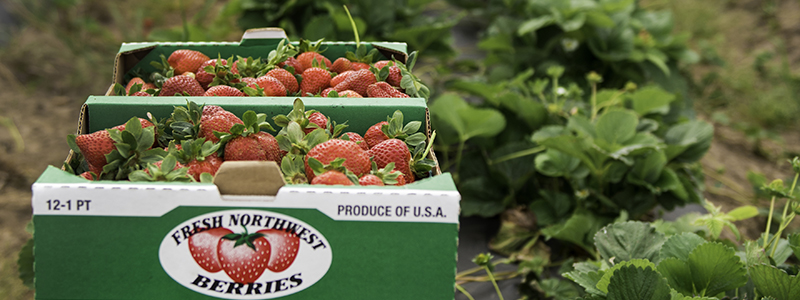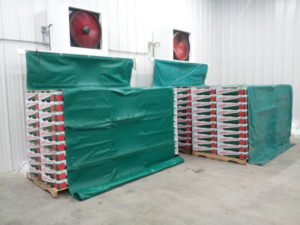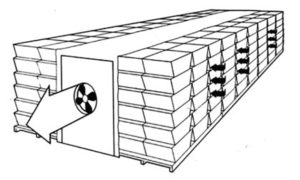
Post-Harvest Handling of Fresh Market Strawberries
Think about all the steps you take from field to shelf in order to ensure that you’re sending the best quality of berries to market.
- Field Packing: Pick directly into the final package. It reduces handling and associated damage and also reduces labor costs.
- From Field to Packing Shed: Make sure that the berries are being transported using a vehicle that ensures a smooth ride. This will decrease bruising. Keep the berries shaded if it’s a long trip.
- At the Packing Shed: Create a custom line for packing that is efficient, have an easy access loading dock, and have a roof that provides protection from the elements.
- Berry Temperature: The optimum temperature for maintaining fresh strawberries is 0 +/- 0.5C (32 +/- 1F).
Notes on Cooling
- Marketability: Cooling is the single most important factor for maintaining quality. Cooling delays of 2, 4, 6, or 8 hours reduces marketability by 20, 37, 50, or 70%, respectively, after holding the fruit at 77F. The longer you wait to cool your berries, the less marketable they become.
- Cooling Systems: The most widely used commercial method to precool berries is forced-air cooling. Cold air is forced to move rapidly through the containers (versus around the containers as in room cooling), allowing the cold air to directly contact the warm berries. Forced-air cooling is typically 75-90% faster at cooling than room cooling.

Forced-Air Cooling System – Photo Courtesy of Polter’s Berry Farm

More resources
- Cooling and temperature management of strawberries. Jennifer DeEll. Ontario Ministry of Agriculture, Food, and Rural Affairs. 2005.
- Recommendations for maintaining postharvest quality. UC Davis.